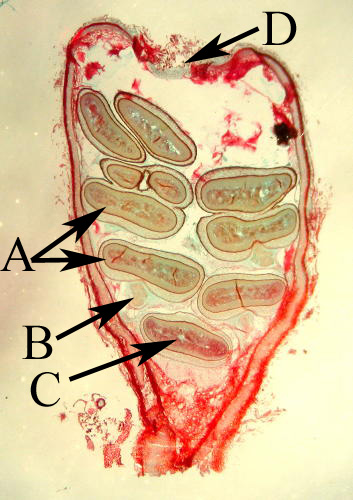Life History/Reproduction
The life cycle of Cyathus striatus is remarkable and elaborate. It begins with an undeveloped nest that is covered by a brown membrane known as an epiphragm. Mechanical or microbial degradation is used to break down this membrane and open the splash cup. Raindrops have the potential to splash the eggs (peridioles) a distance from the nest. The peridioles contain the basidiospores that will eventually land on a suitable substrate. Then, the peridiole will use its funiculus, a thin cord, to attach itself to the |
| A=Peridioles B=Funiculus and hapteron C=Glebal chamber lined with basidia D= Epiphragm |
Diagram of a cross section of a splash cup of Cyathus striatus compliments of Tom Volk. |
